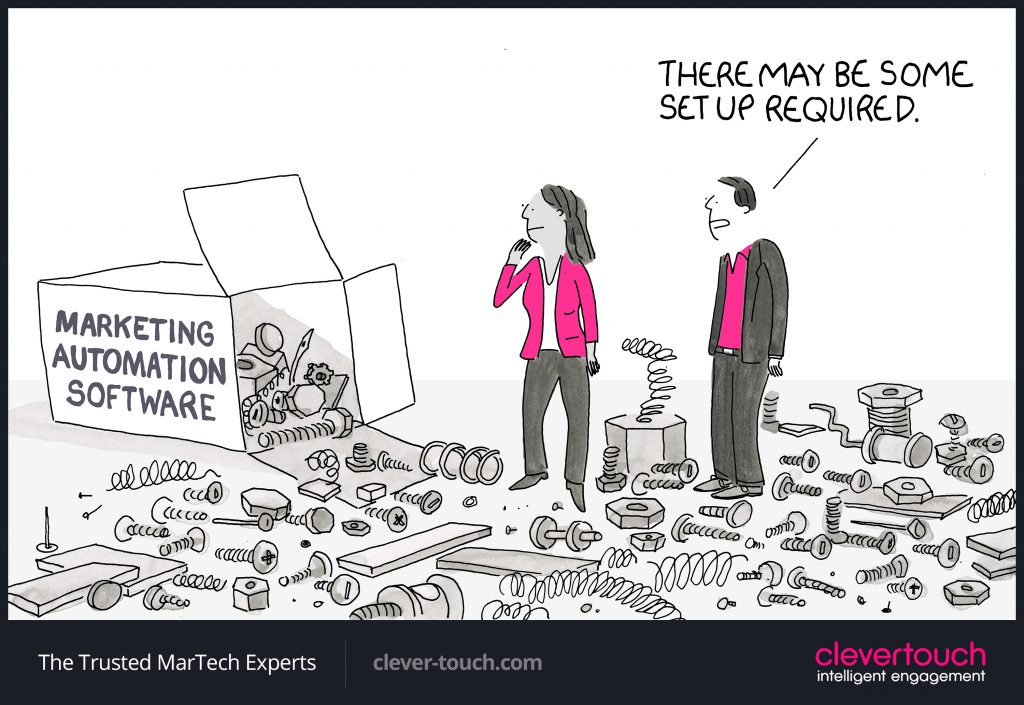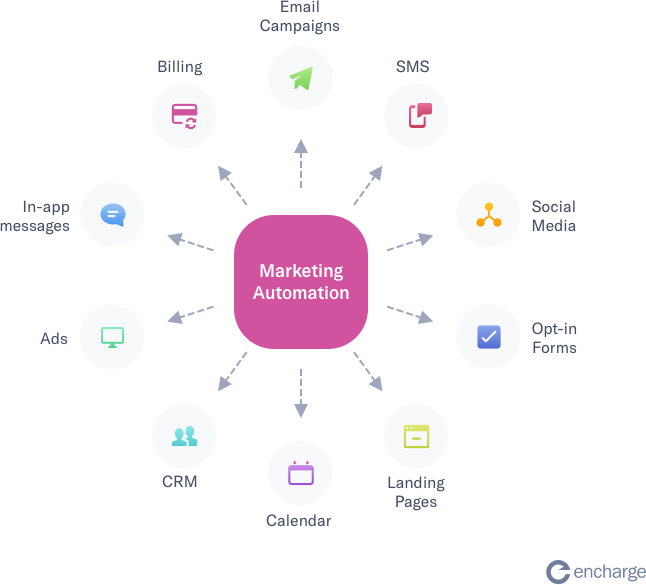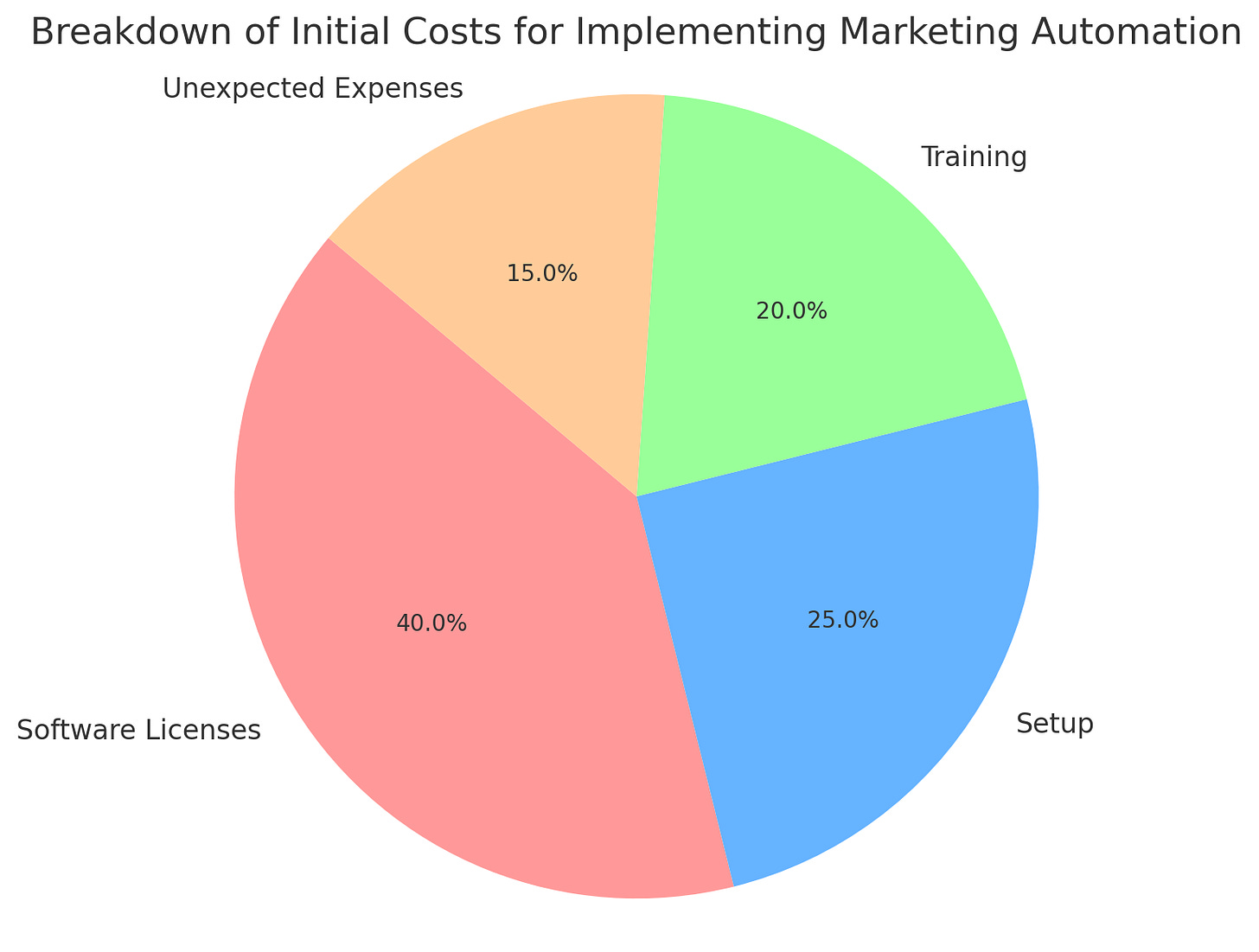The Marketing Automation Paradox
And when more tech leads to higher costs.
In the rapidly evolving digital marketing landscape, automation has become essential for businesses to enhance efficiency, improve customer engagement, and drive sales.
However, as organizations increasingly adopt marketing automation technologies, a perplexing trend has emerged: the more they automate, the higher their costs can become. This phenomenon, known as the “Automation Paradox,” raises critical questions about the sustainability and effectiveness of marketing automation strategies.
Introduction to Marketing Automation
Marketing automation refers to using software platforms to automate repetitive marketing tasks, enabling businesses to streamline processes and improve customer interactions. According to HubSpot, 75% of marketers use at least one marketing automation tool, which indicates its widespread adoption (HubSpot, 2023).
Key Benefits of Marketing Automation:
Increased Efficiency: Automating email marketing, social media posting, and lead nurturing saves time and resources.
Enhanced Targeting: Automation allows for more precise targeting of customer segments based on behavior and preferences.
3Improved Analytics: Automation tools provide insights into campaign performance, enabling data-driven decision-making.
Why More Automation Sometimes Means More Costs?
Marketing automation tools promise efficiency, but the reality can be more complex. Here’s why more automation might lead to unexpected expenses:
1. High Initial Investment
Implementing marketing automation systems requires significant upfront costs for software licenses, setup, and training. A study by Gartner revealed that organizations typically allocate 6-10% of their total marketing budget to technology investments, which can strain resources, especially for smaller businesses (Gartner, 2023).
2. The Sneaky Setup Costs
Getting started with marketing automation isn’t just about purchasing software. There are hidden costs—like setup fees, licenses, and training—that can quickly add up. While these initial expenses might seem manageable, they can strain budgets, especially for smaller businesses that expect a quicker return on investment.
3. Maintenance: The Silent Money Drainer
Once you’re up and running, the costs don’t stop. Maintenance, software updates, and system integrations require continuous attention—and money. Without careful planning, these ongoing costs can outstrip the savings you expected, eating into your marketing budget month after month.
4. The Complexity of Integration
Marketing automation tools rarely work in isolation. They need to sync with your existing systems, like CRM platforms, which can be a real headache. The more complex the integration, the more likely you’ll encounter delays and additional costs. What was supposed to be a seamless transition often turns into a time-consuming and costly project.
5. Automation vs. Personalization: Finding the Balance
Automation is great for efficiency, but there’s a risk of losing the personal touch that customers love. Over-automating can lead to generic, one-size-fits-all messages that fail to engage. When customers feel like just another number, engagement drops, and so do your sales.
6. Data: The Double-Edged Sword
Automation thrives on data, but collecting, managing, and analyzing that data is expensive. If your data isn’t clean and accurate, your automated campaigns will miss the mark, leading to wasted effort and money. This is where investing in good data management tools and practices becomes crucial.
Strategies for Avoiding the Automation Paradox
To make sure your marketing automation investment delivers value without ballooning costs, here’s what you can do:
Start Small and Scale Thoughtfully
Why it Matters: The allure of automating everything at once can be strong—after all, more automation should mean more efficiency, right? Not always. Jumping in too deep, too quickly, often leads to overwhelming your team and your budget.
The smartest approach is to start with a few high-impact areas where automation can offer the most immediate return. For instance, automate your email campaigns or social media postings first, then assess the impact.
Tip: Begin by identifying your biggest pain points or areas where manual effort is most time-consuming and prone to errors. Automate these tasks first.
For example, if nurturing leads is taking up a significant amount of time, automate that process before you move on to more complex areas like multi-channel campaign management.
Long-Term View: As you see results, gradually expand your automation efforts, layering on more sophisticated tools and processes. This phased approach not only spreads out costs but also allows your team to adapt and grow their skills in parallel, avoiding the pitfalls of an overwhelmed team or a blown-out budget.
Train Your Team Well
Why it Matters: Your marketing automation platform is only as powerful as the people who operate it. Many organizations make the mistake of investing heavily in software but skimping on training, leading to underutilization of the tool’s capabilities and costly errors. To maximize your investment, training should be a continuous process, not a one-time event.
Tip: Create a learning and development plan tailored to the needs of your team. Include initial onboarding, followed by advanced workshops as your team becomes more familiar with the platform. Encourage them to get certifications where applicable—many platforms offer these as part of their training programs.
Practical Implementation: Allocate a portion of your budget specifically for ongoing training and support. Consider designating a “super-user” or a team of champions within your organization who receive advanced training and can serve as go-to resources for the rest of the team. This will help you avoid reliance on external consultants and keep expertise in-house.
Keep Your Data Clean
Why it Matters: Automation relies on data, but if your data is poor, your automation will be too. Dirty data—whether it’s outdated, incomplete, or just plain wrong—leads to ineffective campaigns, customer frustration, and ultimately, wasted money. Maintaining clean, accurate data is not just nice to have; it’s critical for the success of your marketing automation efforts.
Tip: Implement a data hygiene policy that includes regular audits, cleansing, and validation processes. Use automation tools to flag duplicates, inconsistencies, or errors in your database. Segment your data to ensure that your campaigns are as targeted and relevant as possible.
Tech Integration: Consider integrating your marketing automation platform with a robust CRM system that supports data enrichment and cleansing. This way, your data remains up-to-date and your campaigns stay on point. The cost of a good CRM system can be offset by the savings you’ll see from more accurate targeting and improved campaign performance.
Balance Efficiency with Personalization
Why it Matters: Automation can help you scale, but it can also lead to cookie-cutter communications if you’re not careful. Today’s consumers expect personalized experiences, and if your automated campaigns lack a personal touch, you risk alienating your audience. Automation should enhance your ability to deliver personalized content, not replace it.
Tip: Use automation to segment your audience based on behavior, preferences, and past interactions. Tailor your messages to these segments, ensuring that each communication feels personal and relevant. Leverage dynamic content and personalization tokens to add individualized elements to your automated emails, landing pages, and ads.
Practical Balance: Regularly review your automated campaigns to ensure they’re still resonating with your audience. This isn’t a set-it-and-forget-it situation. Personalization requires constant attention and tweaking. Consider using A/B testing to see what level of personalization works best and continuously refine your approach.
Monitor, Adjust, and Optimize
Why it Matters: Marketing automation isn’t a one-time setup; it’s an ongoing process. The digital landscape evolves quickly, and so should your campaigns. Without regular monitoring and optimization, your automation efforts can quickly become outdated, less effective, and more costly.
Tip: Establish key performance indicators (KPIs) to track the success of your automated campaigns. Regularly review these metrics to identify what’s working and what isn’t. Set up alerts or dashboards that give you real-time visibility into campaign performance, so you can make adjustments on the fly.
Feedback Loop: Build a feedback loop into your automation strategy. Gather insights from your team, analyze campaign results, and adjust your strategies accordingly. Use these insights to inform future campaigns, ensuring that each iteration is better than the last. This cycle of continuous improvement will help you stay ahead of the curve and maximize your ROI.
Conclusion
The Automation Paradox in marketing serves as a reminder that while technology can drive efficiency and effectiveness, it also comes with its own set of challenges and costs.
While automation can offer incredible benefits, it also comes with risks that can drive up costs if not managed carefully. By starting small, investing in training, keeping your data clean, and maintaining a balance between automation and personalization, you can turn the paradox into a powerful advantage for your business.
Remember, more technology isn’t always better. The key is to use automation as a tool to enhance, not replace, the human elements of your marketing strategy.




